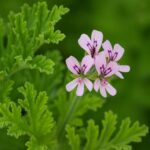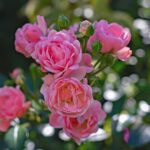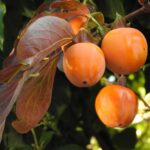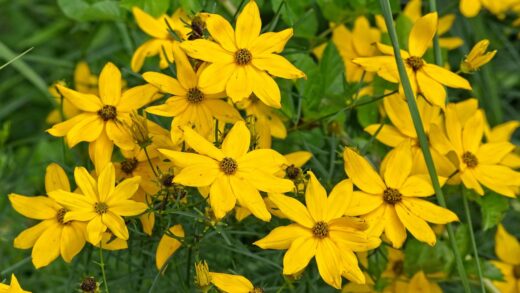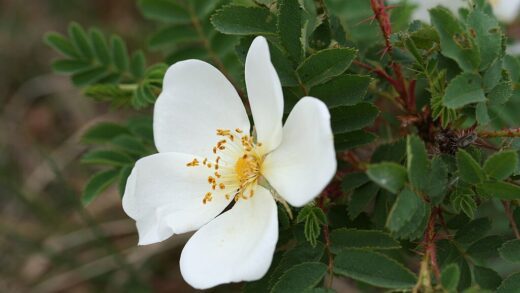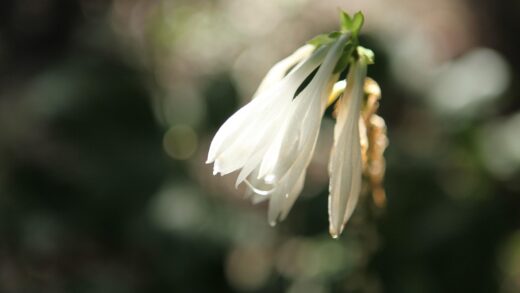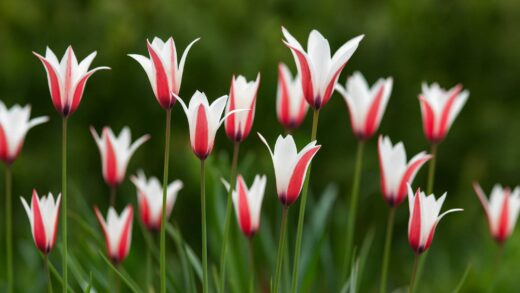Brugmansia are exceptionally vigorous and fast-growing plants, a characteristic that is directly linked to their voracious appetite for nutrients. To sustain their rapid development of large leaves and, most notably, their profusion of enormous, spectacular flowers, a consistent and abundant supply of fertilizer is not just beneficial, but absolutely essential. A poorly fed angel’s trumpet will be stunted, with pale foliage and sparse, disappointing blooms. Understanding the specific nutritional needs of these heavy feeders and implementing a regular, well-balanced fertilization program is a cornerstone of successful cultivation. This ensures the plant has the fuel it needs to achieve its full, breathtaking potential throughout the entire growing season.
The heavy-feeding nature of Brugmansia
The term “heavy feeder” is frequently used to describe Brugmansia, and for very good reason. In a single growing season, a well-cared-for plant can increase its size dramatically, producing a dense framework of woody stems and an abundance of large, lush leaves. This rapid production of biomass requires a significant investment of energy and a constant supply of raw materials in the form of essential nutrients drawn from the soil. If the soil cannot provide these nutrients in sufficient quantity, the plant’s growth will be severely limited.
The most energy-intensive activity for a Brugmansia is the production of its flowers. The blooms are not only numerous but also very large and substantial. The plant channels a vast amount of its resources into forming, opening, and sustaining these flowers. This is why a regular feeding schedule is so directly correlated with the quantity and quality of the floral display. Without adequate nutrition, the plant simply lacks the building blocks necessary to create its signature trumpets, leading to fewer buds, smaller flowers, or even the shedding of buds before they have a chance to open.
In their native South American habitat, these plants often grow in rich, fertile soils that are continuously replenished with organic matter from decomposing plant material. This creates a nutrient-rich environment that can sustain their vigorous growth. In a garden bed, and especially in the finite environment of a container, these nutrients are quickly depleted by the hungry roots of the Brugmansia. It is therefore the gardener’s responsibility to replenish this supply through a consistent fertilization regimen, effectively mimicking the nutrient cycling of its natural ecosystem.
Failing to meet these high nutritional demands will result in a plant that struggles to thrive. The most common signs of under-fertilization include slow or stunted growth, yellowing leaves (a condition known as chlorosis), a generally weak appearance, and, most noticeably, a lack of flowers. For these reasons, a proactive and generous approach to feeding is fundamental to the successful cultivation of a healthy and spectacular angel’s trumpet.
More articles on this topic
Understanding essential nutrients
Like all plants, Brugmansia require a range of nutrients for healthy growth, which are typically divided into macronutrients and micronutrients. The three primary macronutrients, which are needed in the largest quantities, are Nitrogen (N), Phosphorus (P), and Potassium (K). These are the three numbers prominently displayed on fertilizer packaging (e.g., 20-20-20). Each plays a distinct and vital role in the plant’s development. Nitrogen is crucial for vegetative growth, promoting the development of lush, green leaves and strong stems. It is a key component of chlorophyll, the molecule responsible for photosynthesis.
Phosphorus (P) is essential for energy transfer, root development, and the process of flowering and fruiting. A strong root system is the foundation of a healthy plant, and phosphorus plays a direct role in its establishment. It is also vital for the initiation of flower buds. Without sufficient phosphorus, a Brugmansia may have healthy-looking leaves but fail to produce the blooms it is grown for. It is the key to converting the plant’s energy into a floral display.
Potassium (K), sometimes called potash, is the third primary macronutrient and is critical for the overall health and vigour of the plant. It regulates many of the plant’s metabolic processes, including water uptake and movement. Potassium is particularly important for strengthening the plant against stress, disease, and pests. Crucially for Brugmansia, it also plays a significant role in promoting the quality, size, and substance of the flowers themselves. A high-potassium fertilizer is often recommended during the peak blooming season to enhance the floral show.
In addition to N-P-K, Brugmansia also require secondary macronutrients like calcium, magnesium, and sulfur, as well as a range of micronutrients such as iron, manganese, and zinc, albeit in much smaller quantities. Most high-quality, complete fertilizers will contain these essential trace elements. A deficiency in any of these, particularly magnesium (which can cause yellowing between the leaf veins), can lead to health problems. Therefore, using a well-balanced, complete fertilizer is the best strategy to ensure all nutritional needs are met.
More articles on this topic
Choosing the right fertilizer
When selecting a fertilizer for your Brugmansia, there are several effective options. Water-soluble or liquid fertilizers are a popular choice because they provide nutrients in a readily available form that the plant can absorb quickly. These are typically mixed with water and applied during regular watering. This method allows for a very consistent and controlled delivery of nutrients throughout the growing season. A balanced formula, such as 20-20-20, is an excellent choice for the early part of the season when the plant is focused on establishing its leaves and stems.
As the season progresses and the plant begins to set buds and enter its main flowering period, many experienced growers recommend switching to a “bloom booster” type of fertilizer. These formulas have a higher proportion of Phosphorus (P) and especially Potassium (K) in relation to Nitrogen (N). A common example is a tomato fertilizer, which is specifically designed to promote flowering and fruiting. This shift in nutrient balance encourages the plant to direct its energy away from excessive leaf production and towards creating a more spectacular and sustained display of flowers.
Another effective option is to use a controlled-release or slow-release granular fertilizer. These are solid pellets that are mixed into the soil or applied to the surface at the beginning of the growing season. Each granule is coated with a semi-permeable resin that slowly releases nutrients into the soil over a period of several months, activated by soil temperature and moisture. This method offers the convenience of less frequent application, but it may be supplemented with liquid feed during peak bloom for an extra boost.
Organic fertilizers, such as well-rotted manure, compost, fish emulsion, or bone meal, are also excellent choices. These not only supply nutrients but also improve the soil structure and encourage beneficial microbial activity. While they may release their nutrients more slowly than synthetic fertilizers, they contribute to the long-term health of the soil. A common strategy is to amend the soil with plenty of organic matter at planting time and then supplement with regular applications of a liquid fertilizer throughout the season.
The fertilization schedule
A consistent and timely fertilization schedule is crucial for meeting the demands of a Brugmansia. The feeding regimen should begin in the spring, as soon as the plant starts to show signs of new growth after its winter dormancy. This initial feeding provides the necessary fuel for the plant to leaf out and develop a strong framework for the season. As the plant’s growth accelerates through late spring and early summer, the frequency of fertilization should be increased.
During the peak growing season, from early summer through early autumn, Brugmansia benefit from very frequent feeding. If using a water-soluble fertilizer, a common recommendation is to apply it at half the recommended strength with every watering, or at the full recommended strength once a week. This “weakly, weekly” approach provides a constant, steady stream of nutrients that mirrors the plant’s constant demand. For slow-release fertilizers, a single application in spring may last for several months, but always check the product label for its specific duration and reapply as needed.
It is important to always apply fertilizer to soil that is already moist. Applying a concentrated liquid fertilizer to dry soil can scorch and damage the plant’s delicate feeder roots. Therefore, it is a good practice to water the plant with plain water first, and then follow up with the fertilizer solution. This ensures the nutrients are distributed evenly throughout the root zone without causing chemical burn to the roots.
As autumn approaches and temperatures begin to cool, the plant’s growth will naturally slow down. This is the signal to begin tapering off the fertilization schedule. Reducing the frequency of feeding and then stopping completely by mid-autumn helps the plant to prepare for its winter dormancy. Continuing to feed a plant that is trying to shut down for the winter can encourage weak, late-season growth that is susceptible to cold damage and disease. No fertilizer should be given to the plant during its dormant period over the winter.
Recognizing nutrient deficiencies
A Brugmansia will often display clear physical symptoms if it is suffering from a nutrient deficiency. Learning to recognize these signs can help you to correct the problem before it severely impacts the plant’s health. The most common symptom is chlorosis, or the yellowing of leaves. If the older, lower leaves are turning yellow while the new growth remains green, it often indicates a deficiency in a mobile nutrient like nitrogen. The plant is moving the scarce nitrogen from the old leaves to the new ones.
If the yellowing occurs primarily between the veins of the leaves, especially on older foliage, this can be a classic sign of a magnesium deficiency. This is a common issue for heavy-feeding plants, particularly those grown in containers where magnesium can be leached out by frequent watering. This can often be corrected by supplementing with Epsom salts (magnesium sulfate), either dissolved in water and applied to the soil or used as a foliar spray.
A phosphorus deficiency can be harder to diagnose but may manifest as stunted growth and leaves that are a dull, dark green, sometimes with a purplish tint. A more obvious sign is a healthy-looking plant that simply refuses to bloom. If your Brugmansia has plenty of lush, green foliage but produces few or no flowers, a lack of phosphorus and potassium is a likely culprit. Switching to a high-phosphorus, high-potassium bloom booster fertilizer can often resolve this issue.
While deficiencies are a common concern, it is also possible to over-fertilize a Brugmansia. This can lead to a buildup of fertilizer salts in the soil, which can damage the roots and inhibit water uptake, causing the leaf tips and margins to look brown and “burned”. If you suspect a salt buildup, you can flush the soil by watering the plant heavily with plain water, allowing it to drain freely for an extended period. The key to successful fertilization is consistency and balance, providing a steady diet that fuels the plant’s incredible growth without overwhelming it.







